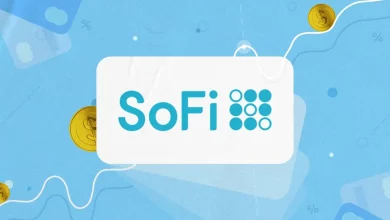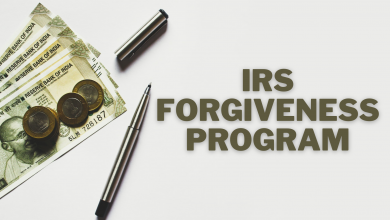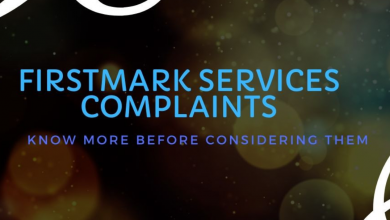Student Loan Tax Deduction to Save Money

It is no surprise that student loans are a major source of money. Many borrowers are focused on repayment options and loan forgiveness, but there are tax deduction opportunities that offer great benefits. You can qualify for a $2,500 tax deduction on student loans due to educational expenses. First, make sure you check your eligibility. This guide will show you the following tax credit and deduction opportunities:
- Student Debt Interest Deduction
- American Opportunity Credit
- Lifetime Learning Credit
- Qualified Tuition Programs
- Coverdell Education Savings account
Is it possible to deduct student loans from your tax bill?
Tax credits are available for certain educational expenses. However, you can get a tax deduction for student loan interest payments. A tax deduction and a credit are very different. Credit is applied directly to the tax amount. During this time, the tax amount is reduced by the deduction.
Rand Paul is also currently working on legislation that will make student loans 100% tax-deductible. The details are available in the next section.
New Tax Deduction Bill
Many borrowers wait to cancel student loans. However, tax deductions could bring greater benefits. Senator Rand Paul is currently working on legislation to allow student loan tax deduction. This legislation is known as the “Tax-Free Education Act” and has many benefits for student loan borrowers.
According to the legislation, education expenses should not be subject to taxes. Borrowers would then be able to deduct 100% of their education expenses from their income taxes. The bill covers student loans as educational expenses. This means that you will not pay taxes on these costs. The bill applies to all schools and also covers K-12 education costs.
This legislation was created because borrowers are already having trouble paying back their debts. Many people in their thirties still have to pay their debts. Education costs are rising at an alarming rate.
Student loan borrowers could see savings of thousands of dollars if Congress approves the legislation. While student loan forgiveness seems more appealing in the news, it is important to keep an eye on this bill because its benefits cannot be overlooked.
Comparison of Student Loan Tax Deduction and Loan Forgiveness
Many borrowers are expecting Biden to offer loan forgiveness. You might be wasting your time if you don’t get immediate forgiveness. Biden’s administration is currently developing targeted programs for loan forgiveness that will cover certain groups of borrowers, such as students misled by schools, disabled debtors, and others. Direct forgiveness is unlikely to be available for borrowers anytime soon.
The loan forbearance (non-repayment) period will end in February 2022. This date will mark the beginning of massive loan repayments. It is not yet clear if borrowers have made financial arrangements after the pandemic. Even if direct loan cancellation cannot be accessed, legislators are still looking for other options that will benefit students. Rand Paul’s tax legislation on student loans is another plan to assist struggling borrowers. You can still save money and not waste time by looking for new opportunities. In the next sections, we will talk about existing options.
Student Debt Interest Deduction
Personal interest is generally not tax-deductible. Some mortgage interests might not be exempted from this rule. Some borrowers may be eligible for a tax deduction on student loan interest. These borrowers must have a Modified Adjusted gross income (MAGI) below $85,000. This amount will be doubled if you file a joint return. Do not be afraid to ask. This item can be found in your tax return, as it includes the amount before you deduct any student loan interest.
This student loan tax deduction can help you save up to $2,500 on taxes. Your taxable income will be lower because your interest is taken from your income. The program does not allow double benefits. If your interest is deductible under another benefit program, this will happen. A double deduction is not possible.
Eligibility to the Interest Deduction

Before you request a deduction, there are some requirements that you must meet. Your loan must be used for educational purposes. You cannot borrow money from your spouse or employer plan. You can apply for a loan from your spouse or a dependent such as a child or relative. To be eligible, you must enroll at least half-time in education. This will give you the opportunity to earn a degree or a recognized certification. The program is open to all accredited public, private, and non-profit schools. Federal student aid programs should also be available to schools.
You can claim this tax deduction for student loans if you make both required and voluntary interest payments.
What are the Educational Expenses Included?
We already mentioned that student loans incurred for educational purposes are eligible for the interest deduction for student debt. What are educational costs? It can cover tuition, accommodation, books, equipment, and transportation costs.
What is the Interest Amount?
The student loan tax deduction doesn’t just cover the required and voluntary interest payments. You can also deduct interest from your income tax for other elements of your student loans. In some cases, origination fees may be treated as interest. Origination fees are a one-time payment that is paid for money or services such as processing costs. If your origination fee was for money directly, it might be subject to a tax deduction.
Capitalized interest may also be eligible for this benefit. Interest payments that accrue during an in-school grace or deferment period are added to the original balance. Capitalization is the term for this period. The capitalized amount can be subject to a tax deduction. If you have not paid any student loan payments in the past year, you will not be eligible for a tax deduction. Other cases allow you to claim a tax deduction for revolving credit lines, refinancing, or consolidation loans. You can check the Internal Revenue Service website or call our debt specialists.
Income Level and Deduction Amount
If your MAGI is greater than $85,000, you will not be eligible for the student loan tax deduction. You are eligible to receive the interest deduction if your MAGI is below $85,000. The amount of your income will affect how much you are eligible for the interest deduction. If you’re single and your income is between $70,000 to $85,000, there will be a phaseout. This means that your deductions will be reduced. However, if you earn less than $70,000, there is no phaseout. Joint returns are exempt from the phaseout if borrowers earn between $140,000 to $170,000.
American Opportunity Credit
The Internal Revenue Service states that the American Opportunity Credit is another tax deduction for student loans. The program provides a tax credit of up to $2,500 for qualified educational expenses for eligible students. Tax credits can reduce the amount of income tax an individual should pay. There is, however, a distinction between the American Opportunity Credit and student debt interest deduction. Interest deduction reduces the income that is subject to tax. Hence, you get a lower tax amount. American Opportunity Credit provides tax credits that reduce the tax amount.
A further benefit to this student loan tax deduction, 40% of it can be refunded. If your tax exceeds 40%, the remainder of the benefit will be refunded.
Who qualifies for American Opportunity Credit?
Credit can be granted for the spouse or dependent’s education expenses. As of the application, the student must still be enrolled in a 4-year program. The program must lead to a degree or recognized credential. Students cannot be convicted for distributing or possessing a drug.
This program also has a MAGI limit. Your MAGI limit can reach $90,000. If you’re single, it can also be higher. You may be disqualified if you earn more than this amount. The MAGI level for filing jointly is $180,000. This student loan tax deduction is not available to married couples who file separately.
Qualified educational expenses
This program can help you cover your educational expenses while studying at a qualifying school. Qualifying schools may be private, public, or not-for-profit. The school must also be permitted to participate in student aid programs.
There are many costs associated with education expenses. The general rule is that school-related items are covered by education expenses. These costs are necessary to be able to study. This tax deduction applies to tuition, fees, books, supplies, and equipment. You don’t even have to purchase these books or supplies from educational institutions in order to receive a tax deduction. Tax deductions do not apply to medical expenses, housing, transportation, and expenses for hobbies or noncredit courses.
Similar to the student debt interest deduction, you can’t get a second deduction for the same amount.
Earning level and tax credit
This program is similar to student loan interest deduction but has a phaseout. Your tax deduction benefit will be reduced if your MAGI falls between $80,000 and $90,000. You will not be eligible for the student loan tax deduction if you earn more than that amount. You are eligible for the full benefit, but you will not be phased out if your earnings exceed this amount.
Note: For more information on American Opportunity Credit or student debt interest deduction, please visit Internal Revenue Services.
Lifetime Learning Credit
Lifetime Learning Credit is another tax credit program similar to American Opportunity Credit. Credits up to $2,000 can be claimed for educational expenses in a tax year. These tax credits can be claimed as many times as possible for eligible students.
Tax credits directly decrease income tax amounts, as explained previously. The income subject to tax is decreased while the deduction is applied. This program is not like American Opportunity Credit. There is no refund. This means that you will not be able to get any refunds even if you get a tax reduction.
Both American Opportunity Credit and Lifetime Learning Credit may be available to you. You should only choose one for your tax year. For a single student, you cannot request both. If you have more than one student dependent whose education expenses are eligible for the tax credit, you can request both credit programs.
Who can request credit?
Tax credits are available to a variety of taxpayers. Credit might be requested for education, dependents, or spouse. The student must be enrolled in a recognized school. All expenses must be covered for education.
More Information
Your Modified Adjusted gross income (MAGI) should not exceed $69,000 for single taxpayers and $138,000 for married couples filing jointly to request the student loan tax deduction. Your tax benefit may be up to $2,000, and there is no refund. It is also available for as long as you want to keep eligibility.
The student loan tax deduction also has the advantage that you don’t have to take a degree program or earn a credential. This qualification does not automatically make you ineligible if you have a criminal record for drug use.
The phaseout applies to this tax deduction opportunity. Your tax credits may be reduced if your MAGI falls between $59,000 to $69,000. You can get full benefits if you earn less than the limit. If you earn more than that, you will be ineligible. The amount is doubled if married filing jointly, which means that the phaseout applies between $118,000 and $138,000
Qualified Tuition Program
Qualified Tuition Program accounts may be created by schools or states in certain cases. This account can be used to pay educational expenses. Individuals may prepay or contribute. To find out if your state has this program, contact the educational institution or government.
Qualified Tuition Program’s benefit is that it is exempt from taxes. The exception is if the beneficiary’s adjusted qualified educational expenses exceed the amount distributed. These expenses include tuition, fees, books, and supplies.
Coverdell Education Savings Account
The Coverdell ESA works in the same way as the Qualified Tuition Program. Individuals can contribute to this account to cover educational expenses. You can only pay one beneficiary, and the total amount can reach $2,000. It is not possible to open more than one account. Contributions to this account are not deductible. It is, however, tax-free so long as the money is in the account.
Please refer to the official Internal Revenue Service for more information on each tax deduction that student loans are subject to. It is possible that the rules will change at any time, so it is a good idea to read the entire list.
Last words
This guide outlined the tax credit and deduction programs that are available to student loan borrowers. Keep in mind, however, that we only covered the basics. For more information, you can visit the IRS website or speak with a debt specialist. Don’t worry if you don’t qualify for any tax deduction on student loans. Refinancing and debt management strategies can help you save money. You can learn more about your options by visiting our blogs.







